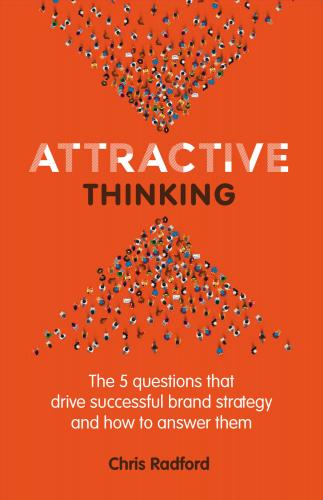First published in Great Britain by Practical Inspiration Publishing, 2020
© Chris Radford, 2020
The moral rights of the author have been asserted
ISBN 978-1-78860-103-0 (print)
978-1-78860-101-6 (epub)
978-1-78860-100-9 (mobi)
All rights reserved. This book, or any portion thereof, may not be reproduced without the express written permission of the author.
Every effort has been made to trace copyright holders and to obtain their permission for the use of copyright material. The publisher apologises for any errors or omissions and would be grateful if notified of any corrections that should be incorporated in future reprints or editions of this book.
Dedicated to Shona for her unfailing love and support for me as well as being a mentor, advisor and contributor to many of the ideas and techniques in this book
Contents
Introduction: What is Attractive Thinking and why does it work?
Part I: Why does Attractive Thinking work?
3 Why is it so difficult to get it right?
Part II: How to apply Attractive Thinking
5 PINPOINT: Who are our customers and what are their problems?
6 POSITION: How can we solve the problem and stand out?
7 PERFECT: How do we create a product, service or message that delivers this?
8 PROMOTE: How do customers find out about it and where do they buy it?
9 PITCH: How do we engage our shareholders, board directors, colleagues and customers?
10 Conclusion: a brand strategy that everyone is convinced will work
Further reading and useful websites
Foreword
Mike Harris
Creator of Iconic Shift mentoring
Founder of First Direct and Egg
Former CEO of Mercury Communications
I have spent a large part of my career creating brands that disrupted the incumbent providers. Each business went on to be sold for significant amounts or created noticeable value for their shareholders reflected in share price, revenue and profit. First Direct was the first telephone bank without branches, Mercury Communications (the Mercury consumer business was ultimately acquired by Virgin Media) was the first challenger to the BT monopoly, Egg was the first internet bank and Garlik (acquired by Experian) provides internet security for everyday people and everyday businesses that goes beyond credit checking, anti-virus software and consumer cyber insurance.
For each of these brands the team worked relentlessly to create a customer experience that was much better than the prevailing norm. We learned that helping customers solve a problem or address a need is the best way to create sustainable growth and to build value for the shareholders.
From these experiences I have drawn some conclusions about what is required to grow a brand that creates shareholder value. This is summed up in some teachable intellectual property I have developed that I call Iconic Shift. I believe a company wishing to develop a powerful, value-creating brand must pass four tests:
1 A value proposition for their customers that is relevant, distinctive and differentiated.
2 The proposition is communicated with sufficient power and reach.
3 The promised experience is delivered every time, everywhere and every day.
4 The business economics work.
High-growth brands have these four things in place. When growth slows down it is because one or more of these elements is not working as well as it could.
I have worked with Chris. His Attractive Thinking approach and method is the most powerful tool I have come across to help you gain the insight from your customers and turn this into a value proposition for your customers and create the means to communicate it with sufficient power. In my experience many businesses do not pay enough attention to the value they create and offer to their customers. Instead they are focused on how much money they can extract from their customers. Attractive Thinking explains why creating value is better than extracting it and shows you how to do it.
Preface and
acknowledgements
I have always held a view that businesses who serve their customers with better products and better service will do better than those that don’t. The purpose of business should be to solve a problem for their customer and address their needs. In my world this purpose is ahead of the profit purpose. The reason is not that profit does not matter; it is essential for the business to prosper. But without a customer purpose, the business will not enjoy sustainable profitable growth. This view is not a moral or principled position, but instead is a practical approach to creating a strong brand in a successful business.
When I started business in 1979, I was somewhat surprised to discover that many people did not hold to these priorities. Helping customers solve a problem with products that address their needs is quite often seen as subordinate to achieving short-term profit results. As a result of seeing this reaction from others, for quite a while, I questioned my view that serving customers was the priority and went along with the prevailing views of people around me that short-term results trumped everything. I always campaigned for my way, which was to focus on doing what would attract more customers, but I did not always win the argument.
Over the years with more experience and with more education, studying and research, I have developed my view of what works best. This book, Attractive Thinking, is my explanation and analysis of this. It is not just theoretical; it is a practical handbook on how to take this approach.
Part I starts with a rapid tour of the prevailing theory and research on how customers behave,
